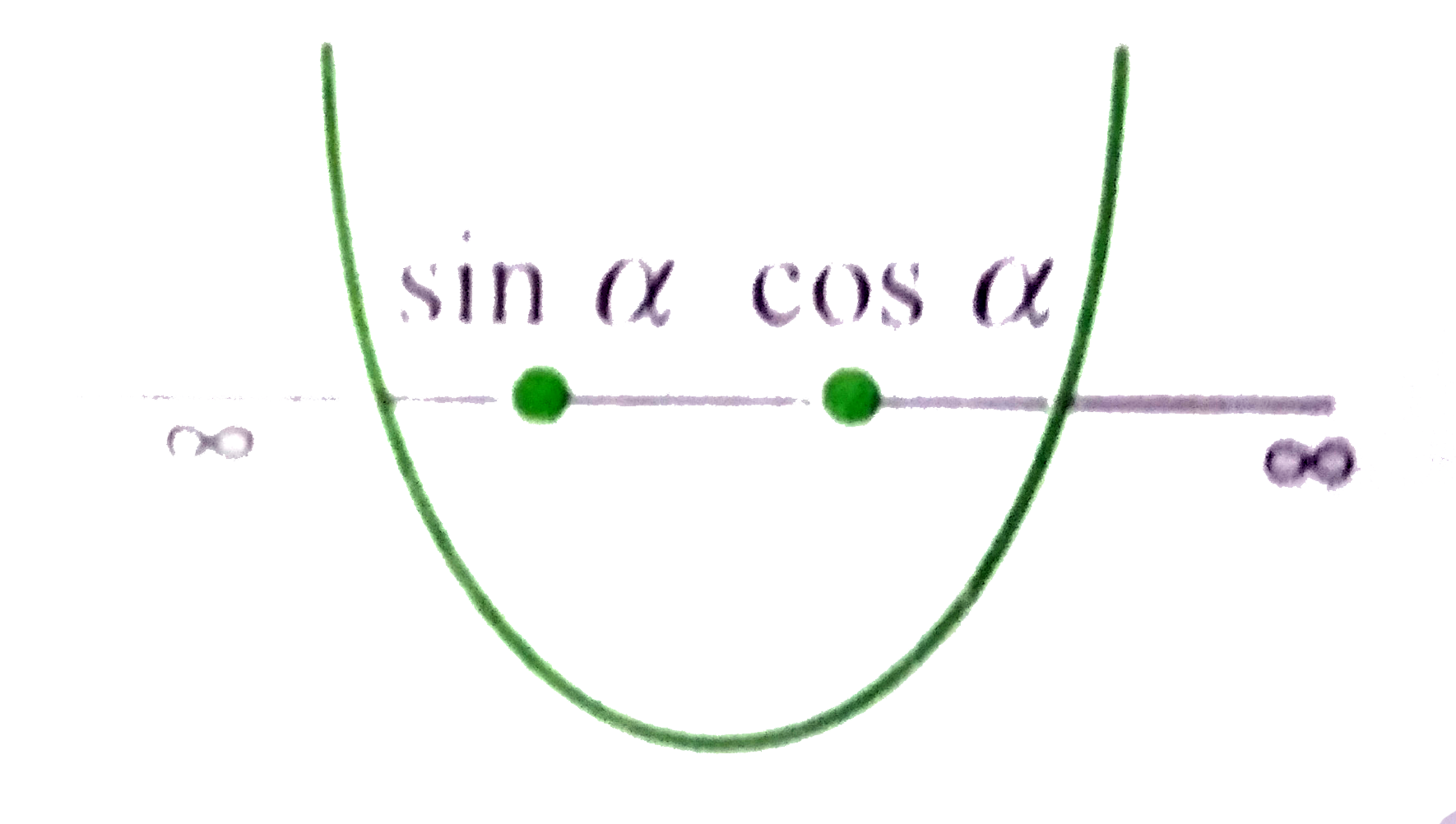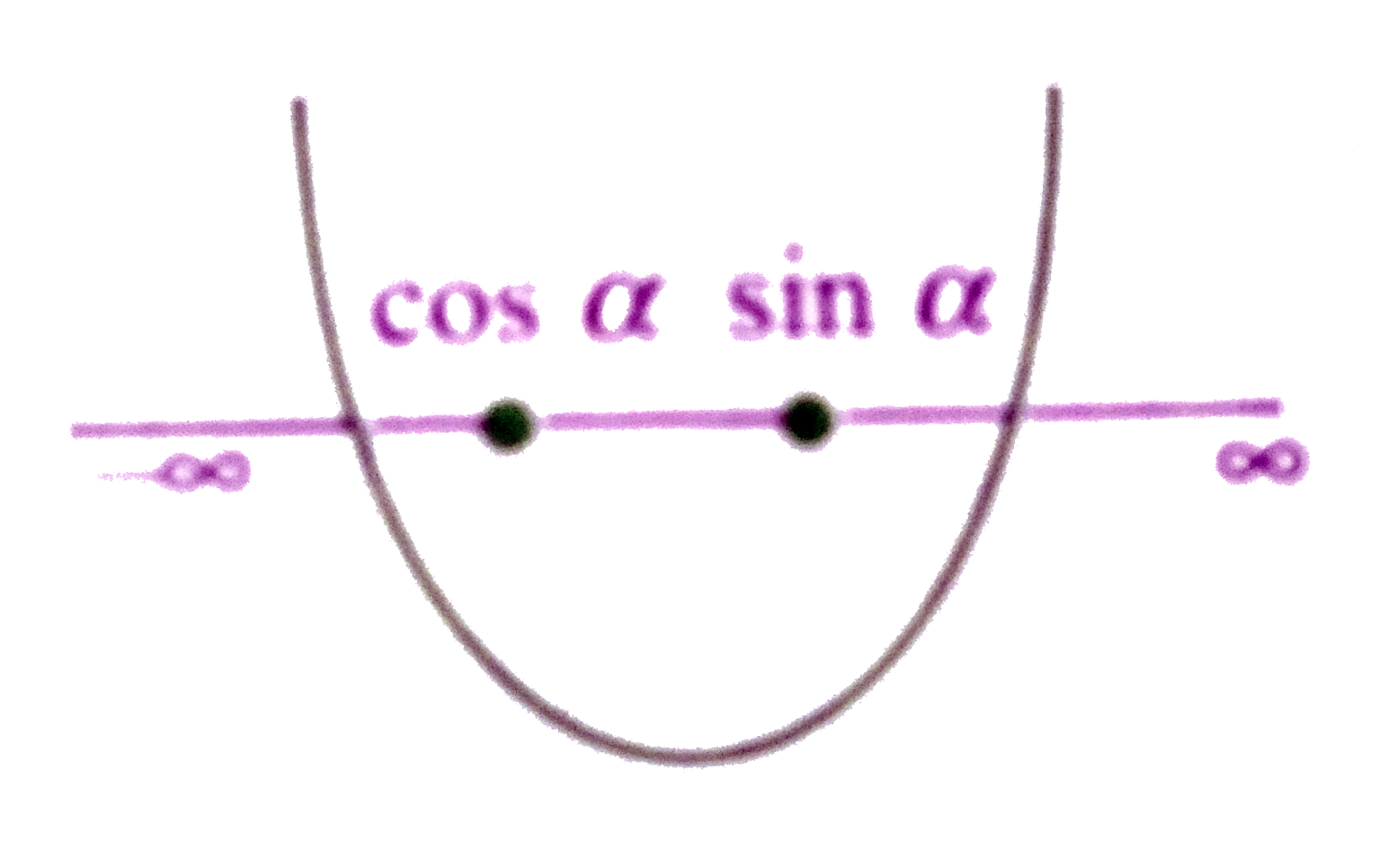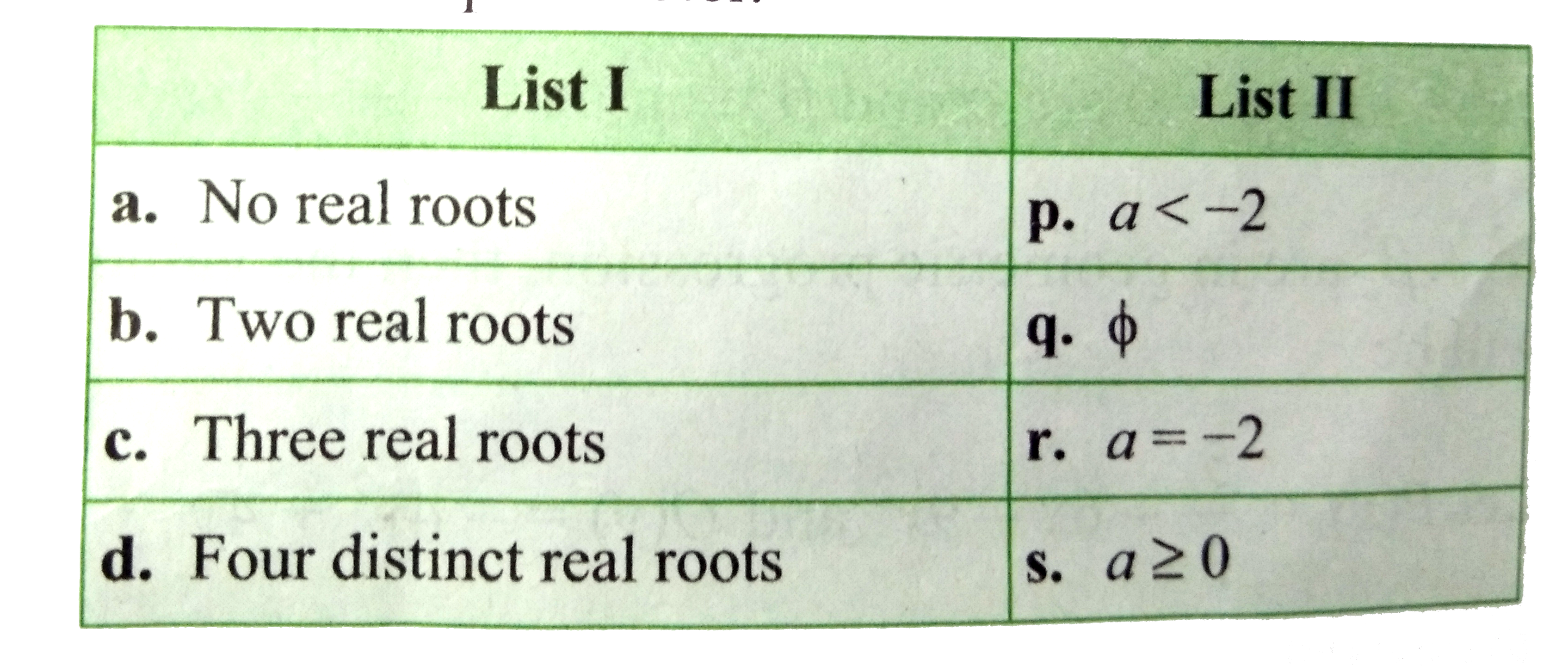Consider equation (x−sinα)(x−cosα)−2=0 . Which of the following is /are true? Solution in Tamil
If 0<α<π4, then the equation has both roots in (sinα,cosα)
If π4<απ2, then the equations has both roots in (sinα,cosα∞)
If 0<α<π4, the one roots lies in (−∞,sinα) and the other in (sinα,∞)
If π4<α<π2 then one root lies in (−∞,cosα) and the other is (sinα,∞)
The correct Answer is:3,4
Let , f(x)=(x−sinα)(x−cosα)−2
Then. f(sinα)=−2<0 and
f(cosα)=−2<0 and
f(cosα)=−2<0
So, sin αandcosα lie between the
roots


Topper's Solved these Questions
- BOOK - CENGAGECHAPTER - THEORY OF EQUATIONSEXERCISE - Exercise (Comprehension)37videos
THEORY OF EQUATIONS
- BOOK - CENGAGECHAPTER - THEORY OF EQUATIONSEXERCISE - Exercise (Matrix)6videos
THEORY OF EQUATIONS
- BOOK - CENGAGECHAPTER - THEORY OF EQUATIONSEXERCISE - Exercise (Single)89videos
THEORY OF EQUATIONS
- BOOK - CENGAGECHAPTER - STRAIGHT LINESEXERCISE - JEE Advanced Previous Year4videos
STRAIGHT LINES
- BOOK - CENGAGECHAPTER - THREE DIMENSIONAL GEOMETRYEXERCISE - Question Bank12videos
THREE DIMENSIONAL GEOMETRY
Similar Questions
Consider an unknow polynomial which divided by (x−3) and (x−4) leaves remainder 2 and 1, respectively. Let R(x) be the remainder when this polynomial is divided by (x−3)(x−4).
If equations R(x)=x2+ax+1 has two distint real roots, then exhaustive values of a are.09:08View SolutionMatch the following for the equation x2+a|x|+1=0 where, a is a parameter.
 02:14View Solution
02:14View SolutionThe value of expression x4−8x3+18x2−8x+2 when x=2+√3
03:21View Solutionabout to only mathematics
03:10View SolutionThe equation of the plane which has the property that the point Q(5,4,5) is the reflection of point P(1,2,3) through that plane, is ax+by+cz=d where a,b,c,d∈N. Find the least value of (a+b+c+d).
01:54View SolutionLet λandα be real. Find the set of all values of λ for which the system of linear equations λx+(sinα)y+(cosα)z=0,x+(cosα)y+(sinα)z=0,−x+(sinα)y−(cosα)z=0. have trivial solution
View SolutionIf x sin ^ (3) alpha + y cos ^ (3) alpha = sin alpha cos alpha and x sin alpha-y cos alpha = 0 then x ^ (2) + y ^ (2) =
01:58View Solution|[ Prove that 0,cos alpha,-sin alphasin alpha,0,cos alphacos alpha,sin alpha,0cos alpha,sin alpha,0 where x=sin alpha cos alpha
03:41View SolutionProve that lim_(x rarr4)((cos alpha)^(x)-(sin alpha)^(x)-cos2 alpha)/(x-4)=cos^(4)alpha ln(cos alpha)-sin^(4)alpha,alpha in(0,(pi)/(2))
View Solutionlim_(x rarr0)(sin(alpha+x)-sin(alpha-x))/(cos(alpha+x)-cos(alpha-x))
04:07View SolutionConsider equation (x−sinα)(x−cosα)−2=0 . Which of the following is /are true?
03:50View SolutionLet λ and α be real. Then the numbers of intergral values λ for which the system of linear equations
λx+(sinα)y+(cosα)z=0
x+(cosα)y+(sinα)z=0
−x+(sinα)y−(cosα)z=0 has non-trivial solutions is03:45View SolutionThe values of α for which the equation sin4x+cos4x+sin2x+α=0 may be valid, are
02:50View SolutionThe set of real values of α for which the system of linear equations:
(x)+(sinα)y+(cosα)z=0
(x)+(cosα)y+(sinα)z=0
(−x)+(sinα)y−(cosα)z=0
has a non- trivia solution is04:19View SolutionIf I=∫cos−1αsin−αsinxsinx+cosxdx ,where |α|≤1 .then which of the following is/are true-
View SolutionThe value of α for which the system of linear equations: x+(sinα)y+(cosα)z=0,x+(cosα)y+(sinα)z=0,−x+(sinα)y+(−cosα)z=0 has a non - trivial solution could be
03:16View Solution

